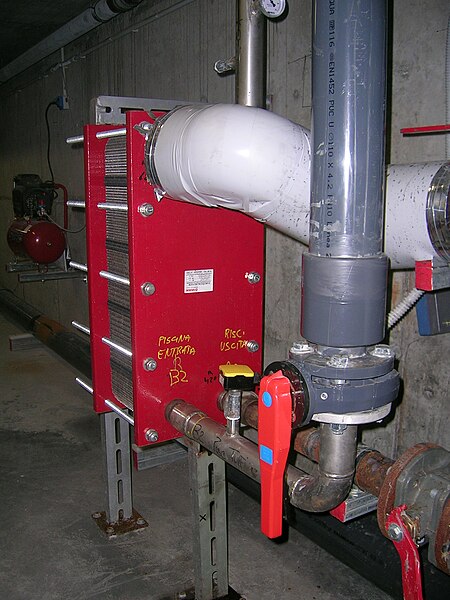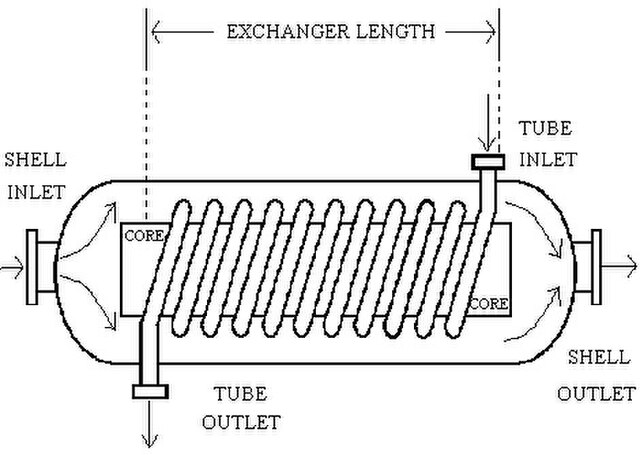A heat pipe is a heat-transfer device that employs phase transition to transfer heat between two solid interfaces.
A laptop computer heat pipe system
Heat pipes keep ground frozen and inhibit water transfer into the open pit during mining activities at Ekati Diamond Mine
Cross section of a heat pipe for cooling the CPU of a laptop computer. Ruler scale is in millimetres
Heat pipes on spacecraft typically use a grooved aluminium extrusion as the envelope.
A heat exchanger is a system used to transfer heat between a source and a working fluid. Heat exchangers are used in both cooling and heating processes. The fluids may be separated by a solid wall to prevent mixing or they may be in direct contact. They are widely used in space heating, refrigeration, air conditioning, power stations, chemical plants, petrochemical plants, petroleum refineries, natural-gas processing, and sewage treatment. The classic example of a heat exchanger is found in an internal combustion engine in which a circulating fluid known as engine coolant flows through radiator coils and air flows past the coils, which cools the coolant and heats the incoming air. Another example is the heat sink, which is a passive heat exchanger that transfers the heat generated by an electronic or a mechanical device to a fluid medium, often air or a liquid coolant.

Partial view into inlet plenum of shell and tube heat exchanger of a refrigerant based chiller for providing air-conditioning to a building
Shell and tube heat exchanger
An interchangeable plate heat exchanger directly applied to the system of a swimming pool
Helical-Coil Heat Exchanger sketch, which consists of a shell, core, and tubes (Scott S. Haraburda design)








